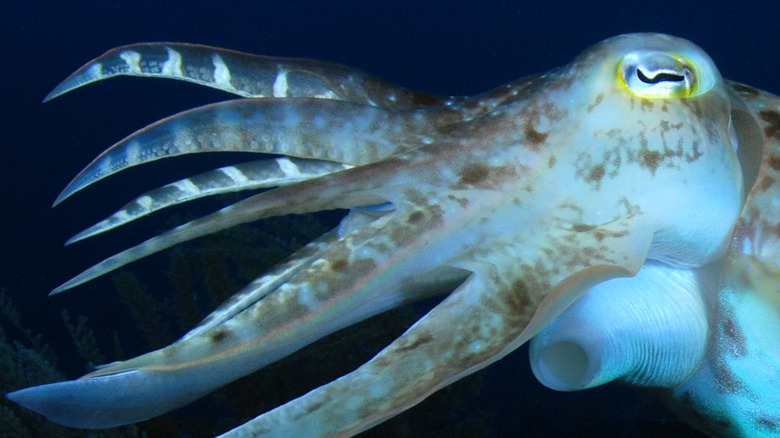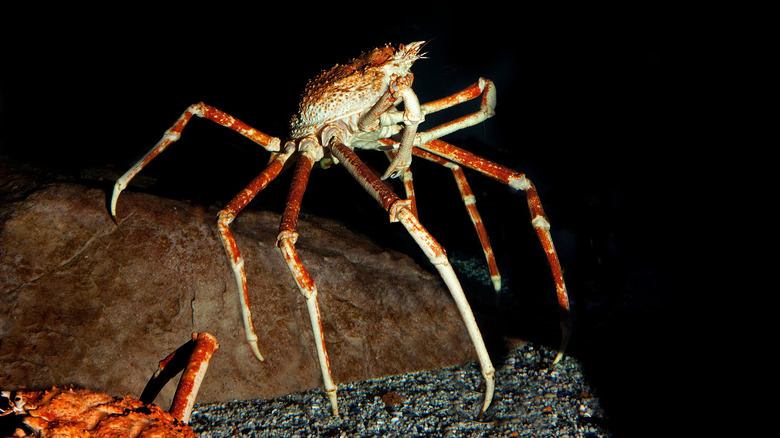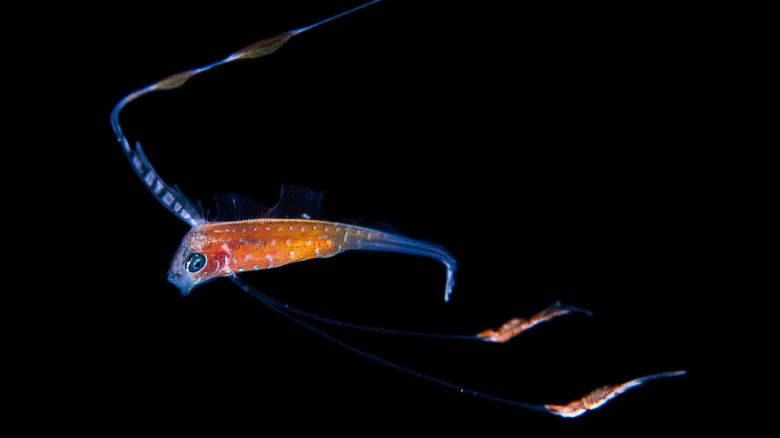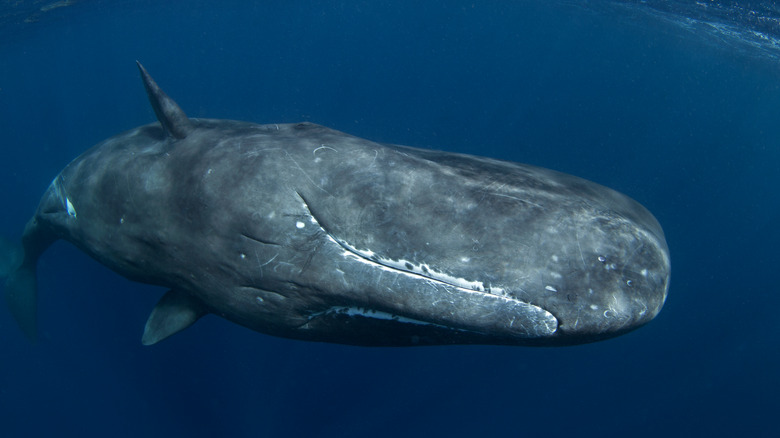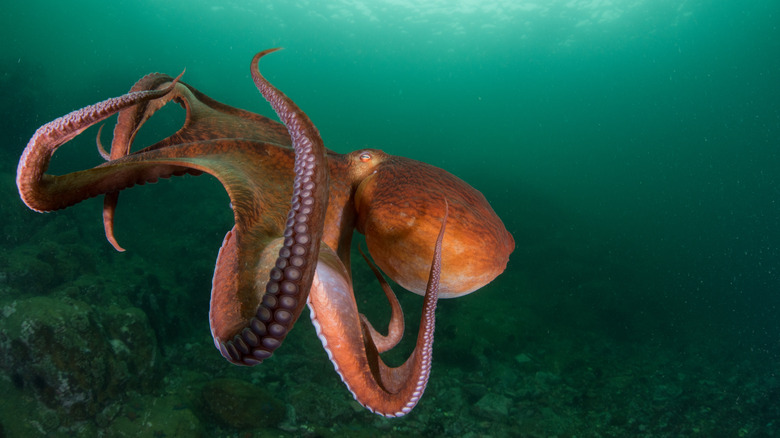The Reason That Some Deep Sea Creatures Are Gigantic
The depths of the sea can be a terrifying place, with many unknowns. According to NASA Oceanographer Dr. Gene Feldman, we know "very little about the vast majority of the ocean" (via NASA). As the National Ocean and Atmospheric Administration reports, anything below 1,000 meters (around 3,000 feet) is typically pitch black, which makes learning more about what lies beneath the surface difficult at best and nearly impossible at worst. Exploring the oceans is so difficult that we have better maps of Mars than we do of the ocean floor.
Because of how difficult it is to explore the ocean, there are many mysteries surrounding the creatures that live thousands of feet underwater. Tales of large mythical sea creatures have circulated since humanity began going on seafaring adventures. While these tales were often embellished with fanciful details, large deep sea creatures that look like they came straight off the page of a fairy tale book are known to lurk in our oceans. In fact, the sheer size of these creatures has puzzled marine biologists for decades. Luckily for us, the answer to these creature's massive size can be found in a scientific concept known as deep sea gigantism (via Science ABC).
Water pressure doesn't prevent sea creatures from growing large
It can be hard to imagine how deep sea creatures are able to reach such massive sizes. After all, water pressure at the bottom of the ocean can get as high as 15,000 psi (via the University College London). With pressure that intense, shouldn't deep sea animals be smaller than those near the surface? While it may seem impossible, water pressure does not prevent sea creatures from being able to reach massive sizes.
The reason water pressure doesn't effect the size of underwater animals is actually really simple. Deep sea creatures are generally not effected by water pressure because they consist of mostly water themselves (via ZME Science). Water is, in most cases, uncompressible, according to the U.S Geological Survey, meaning that creatures made of mostly water don't have to worry about being crushed by the intense water pressure near the bottom of the ocean.
The conditions deep underwater are responsible for creating massive creatures
Deep sea creatures are able to reach such large sizes because of conditions that are unique to the depths of the ocean. The absence of sunlight causes temperatures to drop significantly. According to Britannica, the temperature at the surface of the ocean is around 86 degrees Fahrenheit, but temperatures on the seabed are much lower, around 30 degrees Fahrenheit. These low temperatures cause creatures to have increased cell sizes. In addition, creatures that live in these conditions can live longer, meaning they can continue to grow larger and larger throughout their lives (via Science ABC).
Low temperatures are associated with increased body size in both sea creatures and land creatures. In mammals and birds this correlation between size and climate is known as Bergmann's rule. While this rule is mostly a generalization, it has been observed in many animals other than just mammals and birds, including animals such as turtles and salamanders (via New World Encyclopedia). Marine biologists use Bergmann's rule as one possible explanation for how deep sea creatures are able to obtain massive sizes.
Larger animals tend to be more energy efficient than smaller ones
In addition to living in conditions that allow them to grow larger, the size of most deep sea creatures also helps them survive in the harsh conditions they live in. According to a biology concept known as Kleiber's law, bigger animals are generally more efficient energy-wise than smaller animals due to a slower metabolism (via the National Library of Medicine). When food is scarce, being larger means massive creatures can go longer between meals.
Due to the fact that there are limited food sources due to a lack of oxygen in the deep sea, being massive has advantages for creatures that live on the ocean floor. Since these animals have a slower metabolism, they tend to survive longer than smaller creatures (via Science ABC). Many deep sea creatures have to wait long periods of time before their next meal, so being larger means a better chance of staying alive between food opportunities, according to ZME Science.
We probably won't see deep sea creatures move near the surface any time soon
The good news is, we probably won't see any deep sea creatures migrating to live on the surface any time soon. This has to do with the pressure differences between water near the surface and water near the ocean floor. Humans and other surface-dwelling creatures have gas chambers that would become compressed trying to live deep underwater, which is why humans have to wear pressurized suits when diving (via the National Air and Space Museum). Meanwhile, deep sea creatures have the opposite issue.
Deep sea creatures consist of mostly water, which allows them to be essentially unaffected by intense water pressure. However, these creatures can't survive in lower pressure waters, such as near the surface. Dissolved gases in their bloodstreams would cause bubbles to start forming in their blood vessels, leading to something called a gas embolism. Eventually, this would cause their bodies to swell up and explode (via Science ABC).
